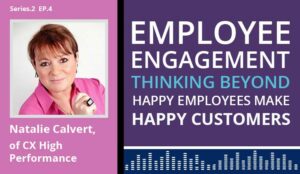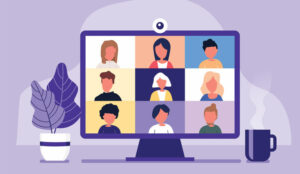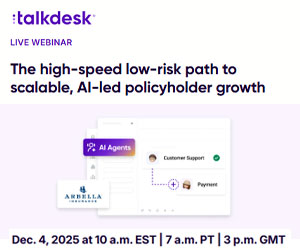Peter Massey discusses how you might reflect on your response to the COVID-19 outbreak and the lessons that you can learn from it.
You were focused at work, your people are great, customers are happy, your company wanted to have greater purpose. Everything was ticking along, slowly improving.
Bang – COVID crisis. Stuff you could never imagine. How little you’re spending; unemployment spikes to the moon; stock markets collapse faster than the 1930s; conservative governments become socialist overnight, supporting people and jobs. All your sites globally go down at the same time.
Amazing things get done in no time, breakthroughs; people are learning and experiencing new, sometimes amazing, things:
- Mercedes F1 team can redesign, prototype and get approval for a ventilator in 2 weeks.
- Website self-service functions you’ve been screaming for have magically jumped out of a 12-month queue in IT and been done in a week.
- The data protection policies required to allow working from home (WFH) got approved in an hour, despite years of discussion.
Suddenly lockdown means different is the new normal. More time at home or reduced numbers in the workplace. It allows you some things which are magical.
Time to talk, albeit from a distance. No commute, breakfast, lunch and dinner with the kids, family exercise time, time to cook something from scratch. Virtual pubs. Video with everything, if your bandwidth isn’t cracking up. And thinking time when you can focus.
Shock frees the mind to think differently. To focus on what’s good, to miss what was taken for granted but now gone. To think the unthinkable is possible.
Should We Fit Back Into Old Routines?
We are all looking forward to, one day, getting back to normal. The “phew!” moment. The hugs. The laughs. The kiss on the cheek, the shake of the hand. The sociability we’d taken for granted.
But wait. Was normal at work that great? What? Remember that your people will be reviewing normal after the crisis with the hindsight of a changed society and time. Normal wasn’t that good at work for all your people.
So now is a big chance to not waste the new behaviours people are learning and experiencing to make a better normal, to reset your business’s normal. A “new normal”. To take note of what’s good – really learn and take note and reuse, redesign and reinforce.
And above all? Above all, to keep slaying the dumb things. At speed. In the way they were allowed to when there was a crisis. To be treated and trusted as adults in their work. To be allowed to get on with stuff. To demand help when they need it. And don’t you dare forget who was important when the chips were down.
So, to Prevent an Auto-Shift Back Into the Old Normal. Imagine if…
It’s over. You cracked it. You smashed it.
NOT that feeling of… you were well meaning but busy-ness stepped right back in. Old normal reasserted itself. The corporate amoeba breeding everywhere.
Breakthroughs maintained. Working practices changed. Operating models reset. Decision-making snip snap. The stretch in thinking and in acting is as fast as in crisis mode. “Day One”, as Jeff Bezos calls it at Amazon. Every day is day one.
Opportunity knocked and you took it. Never waste a good crisis and you didn’t.
How Did You Do That?
So what had been your success factors?
“The team that learns together sticks together,” according to Peter Senge in his seminal book The Fifth Discipline.
So, do three things.
1. Your own daily reflection diaries – Capture what you’re learning as you learn it.
Reflection is the process which creates neural pathways and retains deeper understanding.
2. Reflect together – Share in regular learning communities. Do it now, not after. Internal teams and communities of interest, external networks.
Your peer group is the key one – can you get commitment to learn together from the crisis and put in place the ‘Quarantinis’ online to do so.
Discuss and learn now, daily, weekly at most – a month is a long time in a crisis: what did you know of what this is on March 2nd? Nothing.
3. Document the learnings – Document and have a place to refer to them as you design and decide your new normal when the time is right.
What is learned from the breakthroughs and the changes in decision-making. What it feels like. Bed it into the peer team, perhaps gaming the future scenarios after C19 with the new normal at hand.
Plant the new normal you want into new or existing governance and structures. Into the rhythm and rigour of the way the business ticks.
If there’s no commitment to learning in its own right or to a post-COVID plan made now, then reflect on what lessons and data to capture and use later as justifications and business cases.
How Can You Embed New Learnings?
Let’s first consider the following questions:
- What is working?
- What are we learning?
- What risk was taken?
- What happened?
- What wasn’t risked in advance and is killing you now?
- Who changed and how?
- What boundaries were broken?
- What prior and at-the-time investments are paying off?
- What is in our metrics and feedback?
- What regrets from before it?
- What regrets in it?
- What regrets of ‘didn’t do’ vs. did do?
- How is decision-making different?
- What decisions are working and why?
- How are values being lived/broken?
Woah! These questions are all good, but the list is endless. How can you focus your reflections so they are most useful to your collective resistance against the ‘old normal’ ?
The answer is simple. Start with a simple prioritization question. Shared reflections on a simple question such as: “What changed most in the past four weeks / last week?” And then qualify it: “Which of these things will make the biggest difference to our new normal if we keep them going?”
Now, There’s Two Approaches You Can Take
So you are reflecting and capturing in your daily diary. You have people committing to spending precious time sharing their learnings over a Quarantini or during team sessions.
But what do you actually do in those sessions ?
Here are two approaches:
1. Unstructured
Just open conversations, building into what people see as most important. Particularly useful for operational teams and communities.
You can really see what’s working for them at the coal face. Capture it, socialize it, educate with it; add to it with what other companies are learning; fight for it. The topics will be wide, the insights deep.
2. Structured
Questions and hypotheses. Start with open conversations around the prioritization questions above. And then feed in the strategic questions for your business.
Create some hypotheses of what you think should be different and then attach the learning to them. New operating models, for example.
The topics will be focused, the insights both deep and, as yet, shallow. Shallow could mean it’s a good time to test stuff in adversity.
Final Thoughts
Be the one leading the avoidance of piss-poor planning for the ‘new normal’ ! Do it relevantly by reflecting on the daily learnings, sharing those learnings collectively and documenting what’s been learned.

Peter Massey
Then you are ready to plan your way to a ‘new normal’. And not waste a crisis by sloping back into the ‘old normal’ surrounded by the corporate amoeba.
Start now. Learning together is a positive team activity to maintain stamina over the coming weeks.
Thanks to Peter Massey, MD at Budd, for sharing this article with us.
Author: Robyn Coppell
Published On: 8th Apr 2020 - Last modified: 27th Nov 2023
Read more about - Guest Blogs, Coronavirus, Peter Massey





































